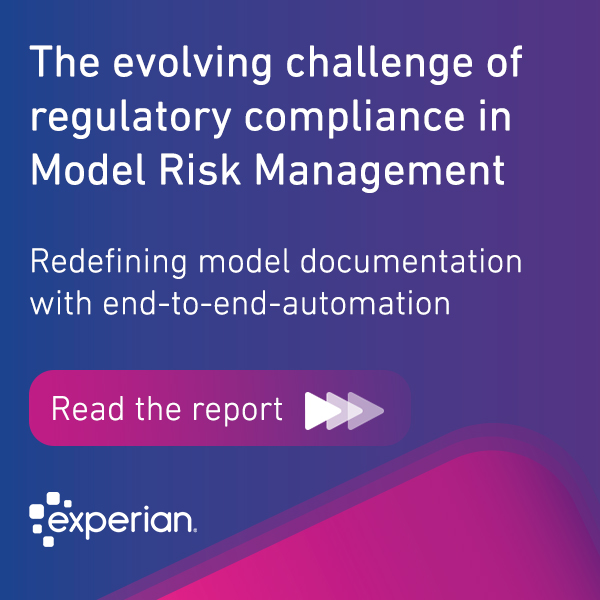Monthly Archives: November 2023

What are lenders prioritising when it comes to Gen AI? We take a look at five transformative use cases in lending, and organisational priorities for integrating Gen AI into customer lifecycle processes. Although Generative Artificial Intelligence (Gen AI) only launched publicly in the form of Chat GPT last November, adoption has been widespread and rapid. Even in typically risk-adverse industries like financial services, our research shows that there is widespread recognition that Gen AI could deliver a range of benefits across business functions. We identified five areas of focus for lenders based on our research. In a study conducted by Forrester Consulting on behalf of Experian, we surveyed 660 and interviewed 60 decision makers for technology purchases that support the credit lifecycle at their financial services organisation. The study included businesses across North America, UK and Ireland, and Brazil. The qualitative research showed that lenders are already using a type of Gen AI, Large Language Models (LLMs), in their operations, with a focus on testing across areas such as customer service and internal processes before deploying to credit operations. We look at the potential use cases, and how businesses are using Gen AI now. 1. Personalised customer experience Customers today expect a personalised lending experience that is tailored to their unique needs and preferences. GenAI can leverage customer data to generate personalised loan offers, recommendations, and repayment plans. This helps lenders improve customer satisfaction and loyalty, leading to increased customer retention and revenue growth. This is an area that is front of mind for the companies in our research – nearly half of businesses surveyed are planning to implement or expand technology capabilities to either upsell or retain customers in the next 12 months. Furthermore, 50% of companies believe that offering more tailored underwriting and pricing is a top priority in their credit operations, followed by 44% who also aim to increase personalisation in marketing, products, and services to their customers. According to the research, some organisations have formed alliances with technology providers like OpenAI and Microsoft to investigate and further explore the use of LLMs. These partnerships involve analysing customer data to identify opportunities for cross-selling. 2. Enhancing models with new data sources With new data sources emerging all the time, Gen AI is one of the technologies that will most likely accelerate the opportunity for businesses to incorporate them into models. Lenders could include sources such as social network data into their models by using LLMs. This unstructured data, including customer emotions and behaviours on social networks, would be treated as an additional variable in the models. According to the research social media data and psychometric data is already used across financial services, to varying degrees. It showed that 35% of retail companies use social media data, while 29% of FinTechs use psychometric data. Auto finance companies sit at lower end of the adoption scale, with only 12% using social media data and 15% psychometric data. 3. Operational efficiencies Gen AI can help bring operational efficiencies to customerjourneys across the entire lifecycle, offering lenders theability to automate and streamline various processes,resulting in improved productivity, cost savings, andenhanced customer experiences. One of the top challenges for businesses surveyed isimproving customer journeys during onboarding, and thiswas particularly significant for credit unions / buildingsocieties (53%). 4. Detecting and preventing fraud Gen AI can play a crucial role in fraud detection by analysing patterns and anomalies in vast datasets. By leveraging machine learning techniques, Gen AI models can proactively identify potentially fraudulent activities and mitigate risks. The ability to detect fraud in real-time improves the overall security of lending operations and helps protect lenders and borrowers from financial losses. Detecting and preventing fraud is a constant challenge for lenders. 51% of retailers and 47% of credit unions/ building societies surveyed said that reducing fraud losses is a key challenge for them. 5. Customer service Driven by advances in the machine learning and AI space, the world of customer service has benefited hugely from the adoption of virtual assistants and chatbots in recent years. This looks to continue, with businesses saying that LLMs are being tested for customer service purposes, allowing lenders to identify customer issues and automate actions. What's next for lenders? The research found that lenders are utilising various machine learning techniques like regression, decision trees, neural networks, and random forest, along with LLMs. Businesses are in the early stages of exploring how they can use LLMs in credit risk models, but it will undoubtedly involve a blend of existing and new capabilities. As with any emerging technology, it’s important to look at potential risk. The research indicated that organisations see challenges and concerns when it comes to the use of LLMs in their models. It is crucial to ensure the models are trusted, validated, and properly understood to avoid reliance on outsourced solutions and maintain control and visibility over the models’ functions. The ability to explain decisions in Gen AI to avoid bias can be difficult, and businesses will be watching the regulators to understand how best to proceed. There is no doubt, however, that Gen AI will optimise the credit customer lifecycle, creating vast opportunities for lenders. Download PDF More on Gen AI

In a study conducted by Forrester Consulting on behalf of Experian, we surveyed 660 and interviewed 60 decision makers for technology purchases that support the credit lifecycle at their financial services organisation. The study included businesses across North America, UK and Ireland, and Brazil. More on Gen AI

Fraud prevention is a critical concern for businesses today. To help combat this ever-present threat, the consortium approach has emerged as a powerful tool in the fight against fraud. By pooling resources, expertise, and creating visibility, consortium members can be more effective in detecting and preventing fraudulent activities. con-sor-tium noun: A group of people, countries, companies, etc., who are working together on a particular project. What is a consortium? Within business, consortiums are a global concept and can operate under multiple categories, including finance, marketing, and tech. A well-known, successful example is Star Alliance. They are a group of airlines, whose agreement enables their members to share and benefit from flights, airport lounges, and frequent flyer programs. All Star Alliance members are working towards the same goal, which is to offer their customers a seamless travel experience. Key benefits of the consortium approach Resource sharing: Pooling resources like funding, expertise, and infrastructure can lead to cost savings and efficient resource utilisation. Risk mitigation: Shared risks make it easier for organisations to tackle ambitious projects or ventures with reduced individual exposure. Access to expertise: Members can tap into the collective knowledge and skills of the consortium, enhancing their capabilities. Market influence: Consortiums often have more influence in negotiations, regulations, and standards-setting, benefiting all members. Innovation: Collaboration can foster innovation through cross-pollination of ideas and technologies among members. Economies of scale: Consortiums can negotiate better deals on purchases or services due to their combined purchasing power. Reduced competition: In some cases, members can reduce direct competition among themselves by coordinating efforts. Market entry: Consortiums can facilitate market entry, especially in foreign markets, by leveraging each other's networks and knowledge. Shared infrastructure: Access to shared facilities or infrastructure can save costs and accelerate projects. Brand recognition: Being part of a reputable consortium can enhance an organisation's credibility and market presence. However, consortiums also come with challenges such as coordination issues, conflicts of interest, and shared decision-making. Successful consortiums require effective governance structures and clear agreements among members. Consortiums in fraud detection and prevention The success of a consortium relies on the collective commitment of its members to a shared goal. In the context of fraud prevention, this means maintaining consistent and high-quality insights across all members. To achieve this, consortium members adhere to an agreement that covers elements such as data quality and data frequency. These agreements ensure that all participants contribute their best insights and information. By fostering a culture of cooperation and sharing, consortiums create an environment where valuable insights can be harnessed to combat fraud effectively. However, it's crucial to emphasise that the success of consortiums ultimately depends on the active participation and contribution of all its members. Consortiums can only thrive when every member is dedicated to making their quality insights accessible to the group. Read more about how consortiums can revolutionise fraud detection and prevention by sharing data on fraudsters across different product types and industry sectors with Hunter.




